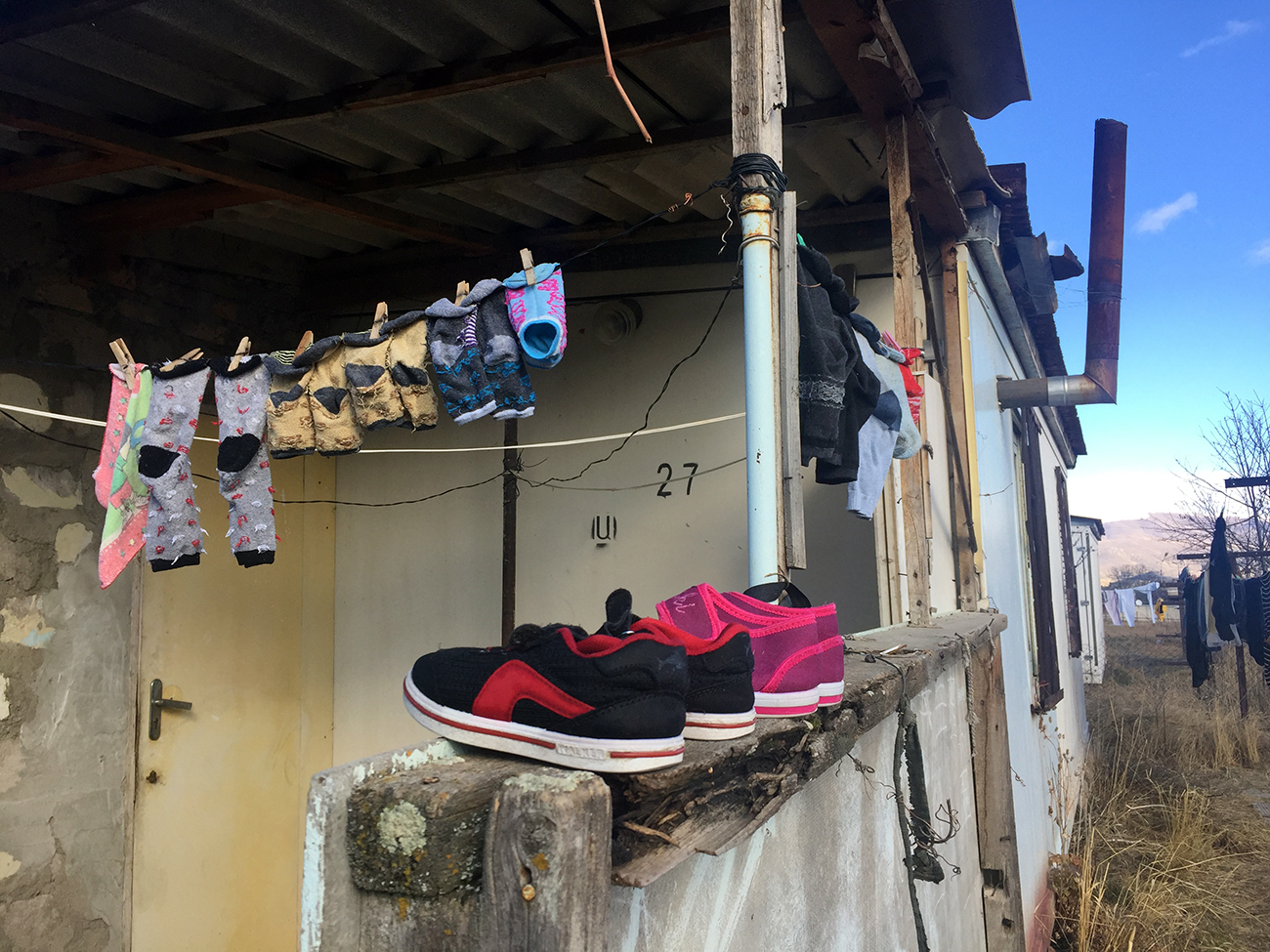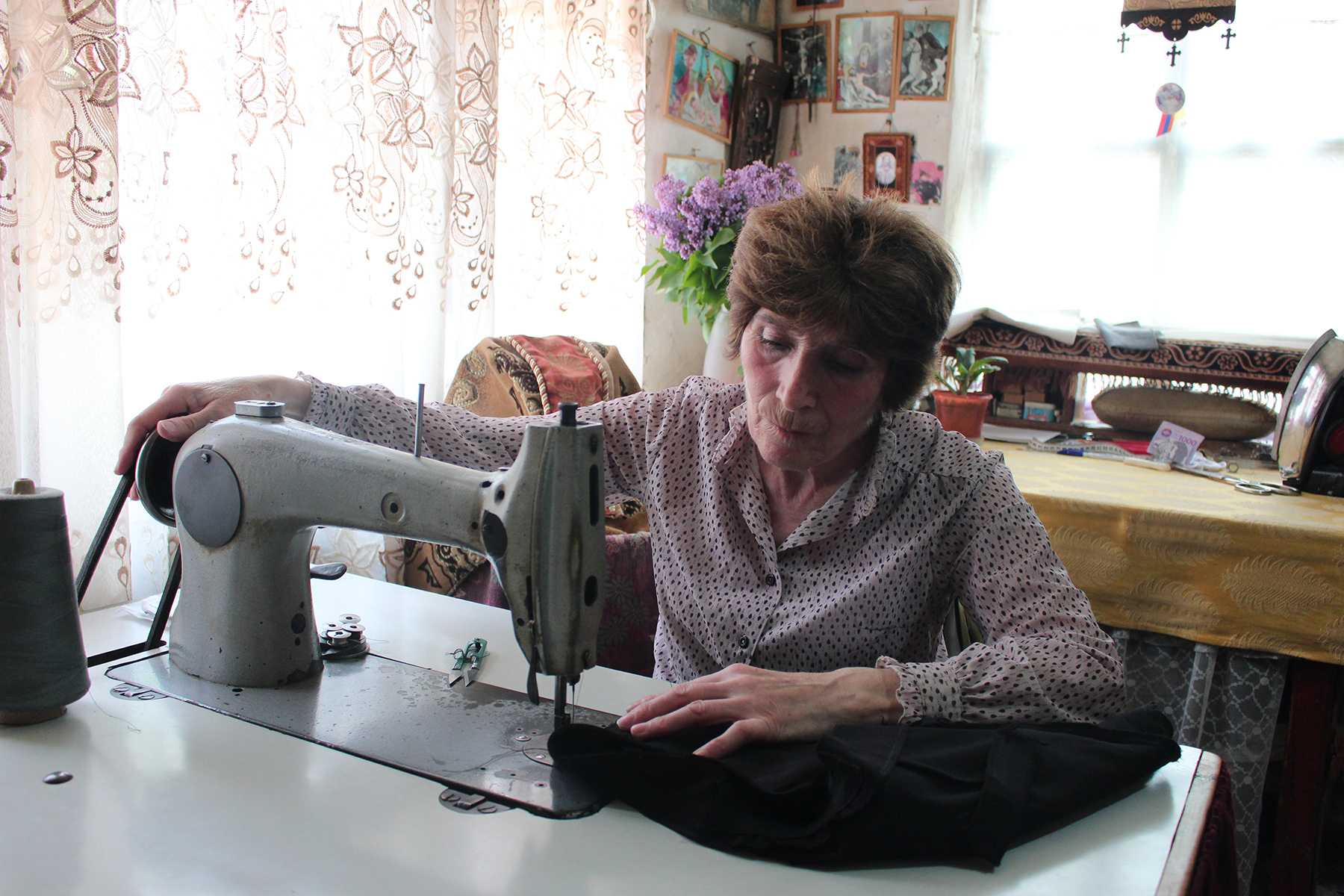
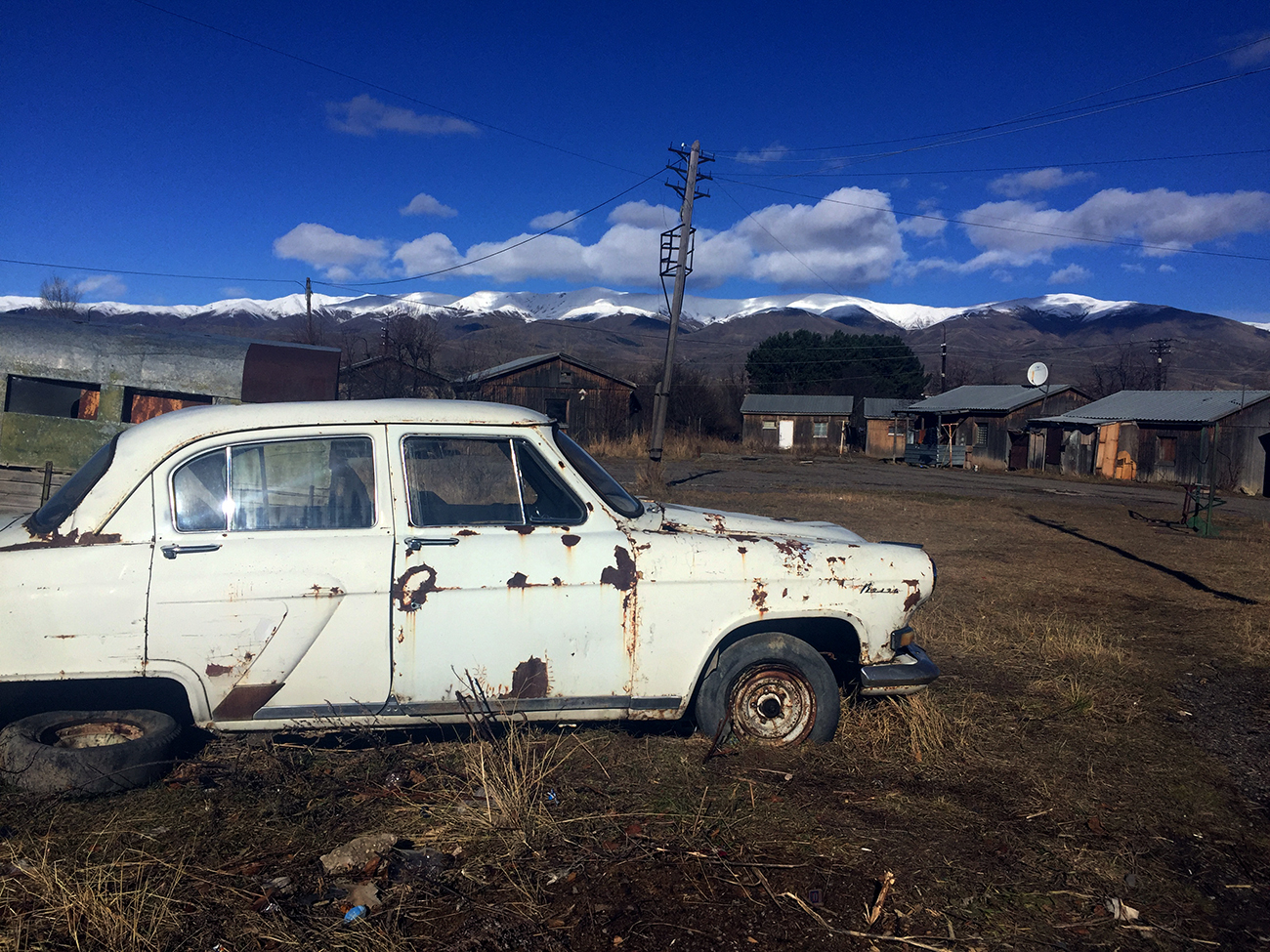
Thirty years have passed since the day an earthquake devastated northern Armenia, killing 25,000 people. The town of Spitak, close to the epicentre, was utterly destroyed, and for many of the survivors, life remains a struggle 30 years on.
At its epicentre in the village of Nalband, in the Spitak Community, the earthquake had a magnitude of 6.8 on the Richter scale. Spitak was completely levelled; of the town’s population of 18,400, almost 4,000 people remained under the rubble.
Today, not far from the comfortable town centre, emergency housing built by Germans and Italians in 1989, which was intended to be occupied for just five years, still stands.

Andrey Ghukasyan, the governor of Lori Province, to which Spitak belongs, says that problems providing permanent housing for these families ‘can be solved in 2–3 years, as the state’s capabilities expand’.
He told OC Media, that the government is seriously engaged in this issue — on 22 November, the Government approved a draft law to provide state support to families displaced by disasters.
It is planned to allocate ֏460 million ($950,000) to solve the housing problems of families displaced by disasters.
But for many of the 420 families that continue to live in the German and Italian quarters of Spitak, hope that the day will come when they will have normal housing faded long ago.
[Read on OC Media: The two faces of Gyumri]
Zemfira Poghosyan, 62, German Quarter
‘The German quarter is four kilometres from Spitak. This quarter has no shops, no kindergarten, no school, no transport. The population of this quarter only walks,’ says 62-year-old local resident Zemfira Poghosyan.
‘After the earthquake, we lived in a village for a while, in a small house. In 1995, we were provided with this house built by the Germans, which was designed to be used as housing for five years. But we have been living here for 23 years.’
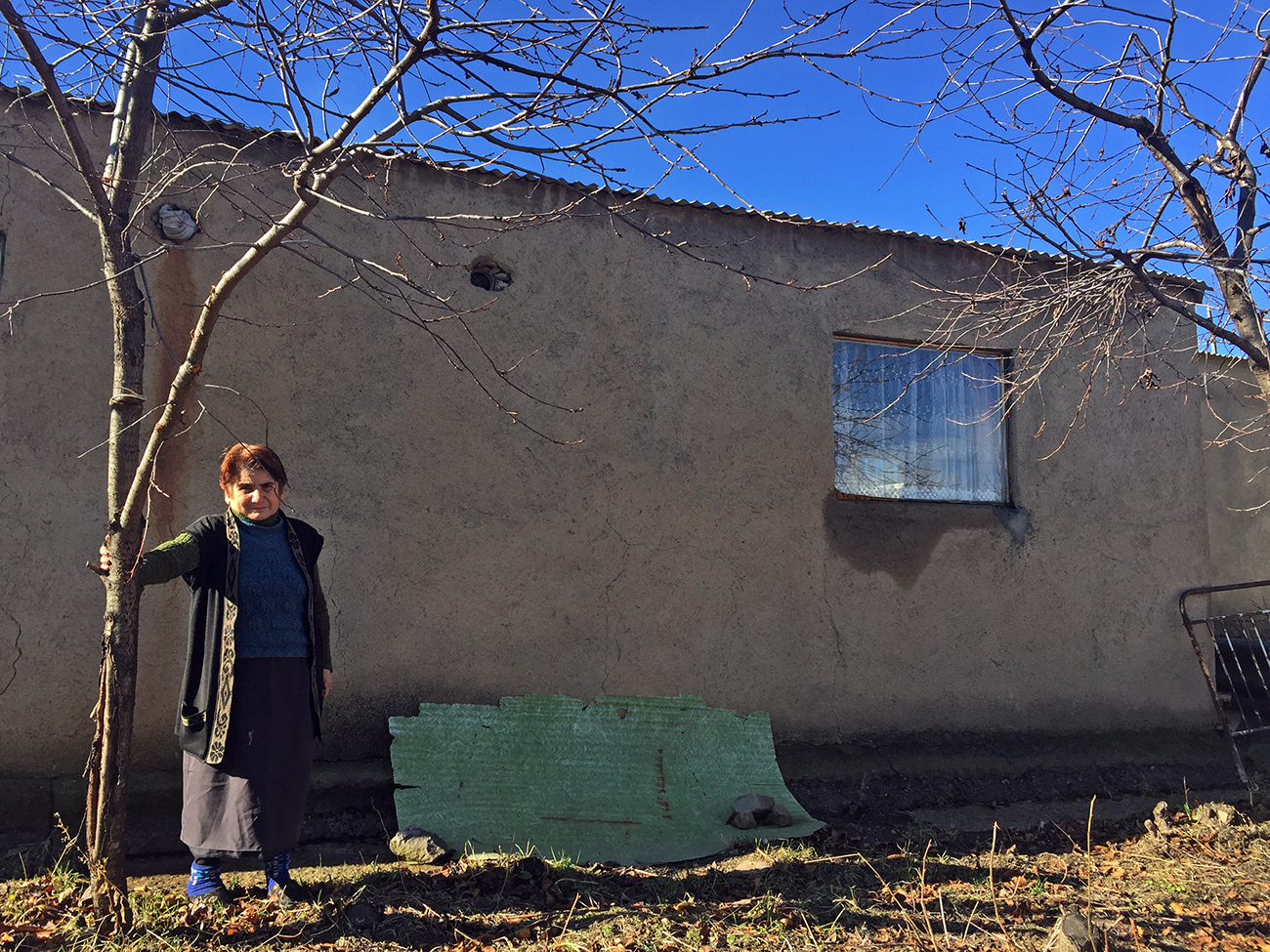
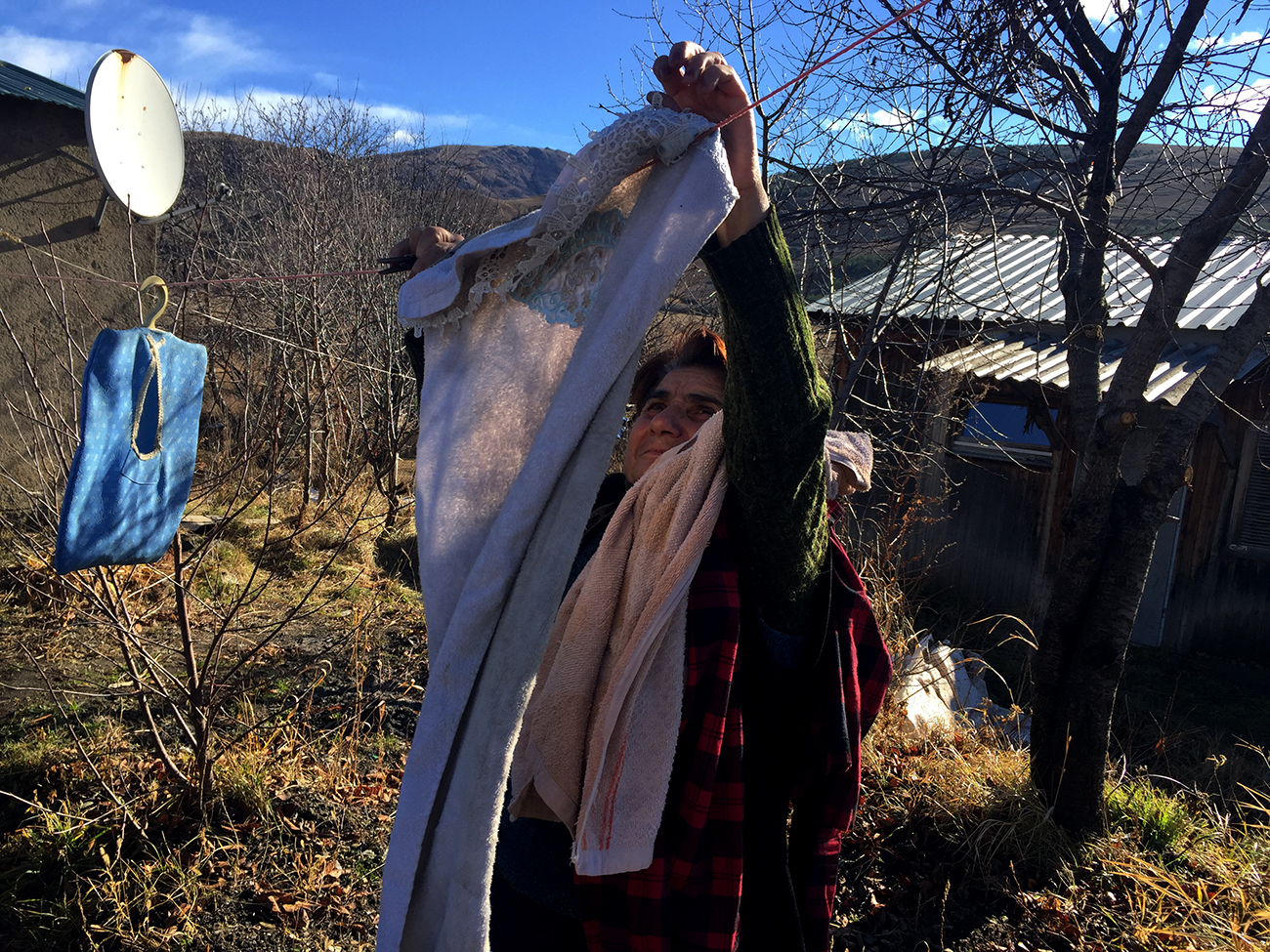
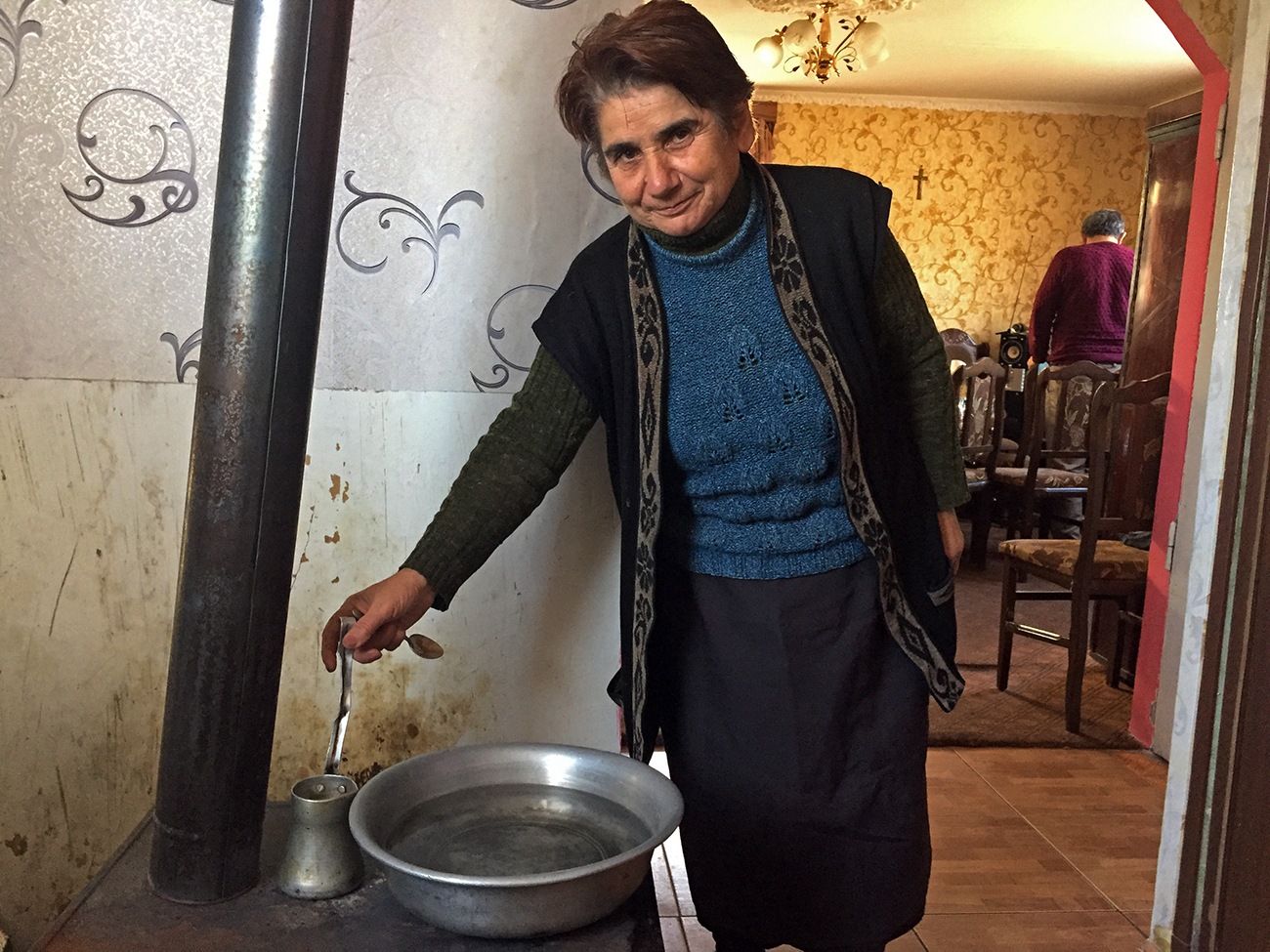
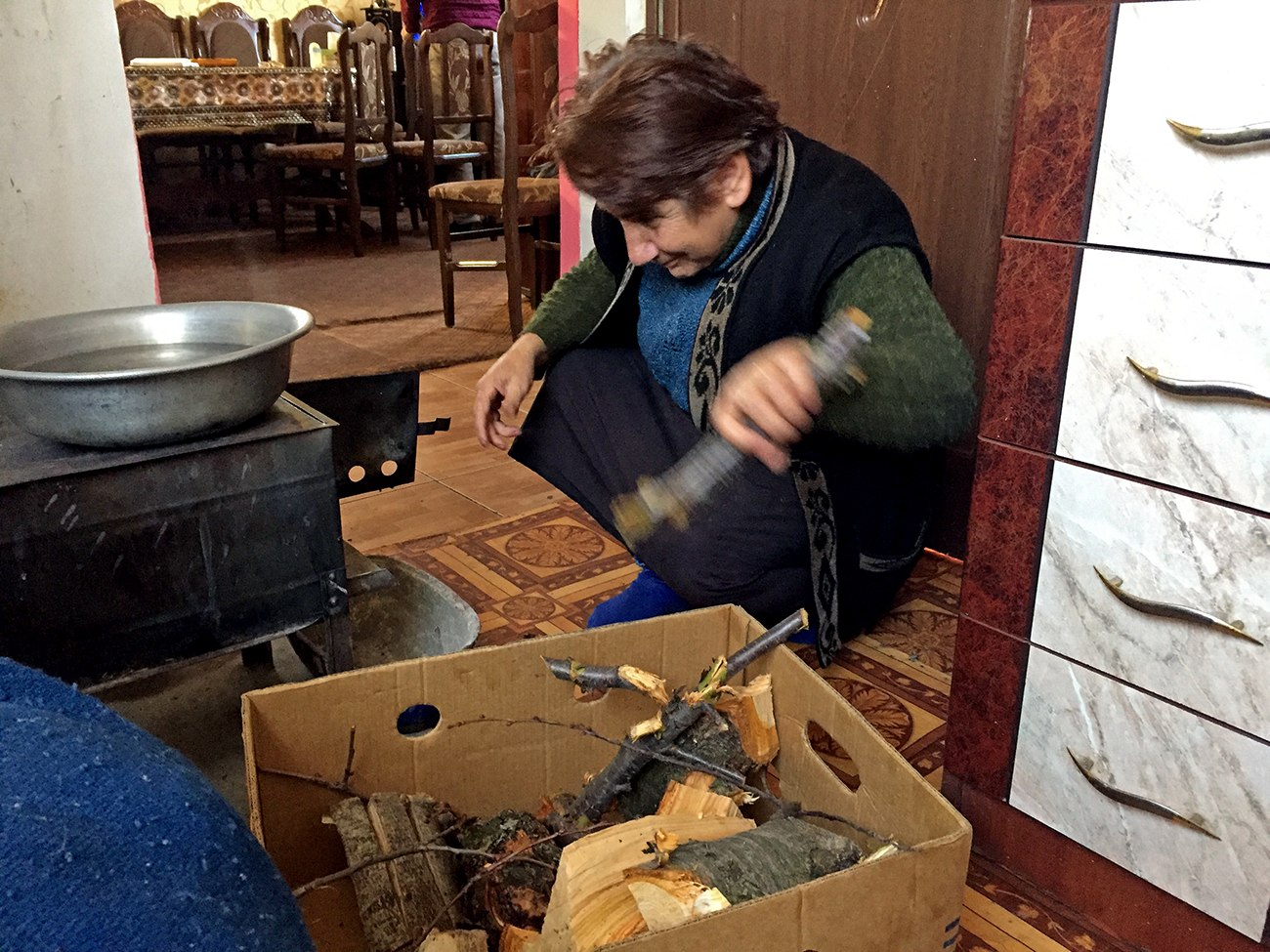
‘The wood has already rotted, mice and rats breed throughout the quarter. We’re 45th in the queue for housing. I wish they would give us a flat so that our son and daughter-in-law could live there.’
‘My husband goes to work in Russia. When he returns in the winter months, he works in the boiler room of the Spitak police station and earns ֏60,000 ($125). He is a veteran of the Karabakh war.’
‘I don’t work. Barely make ends meet. We could never buy a flat. Now we have a hope that the new authorities will partially be able to solve our everyday problems.’
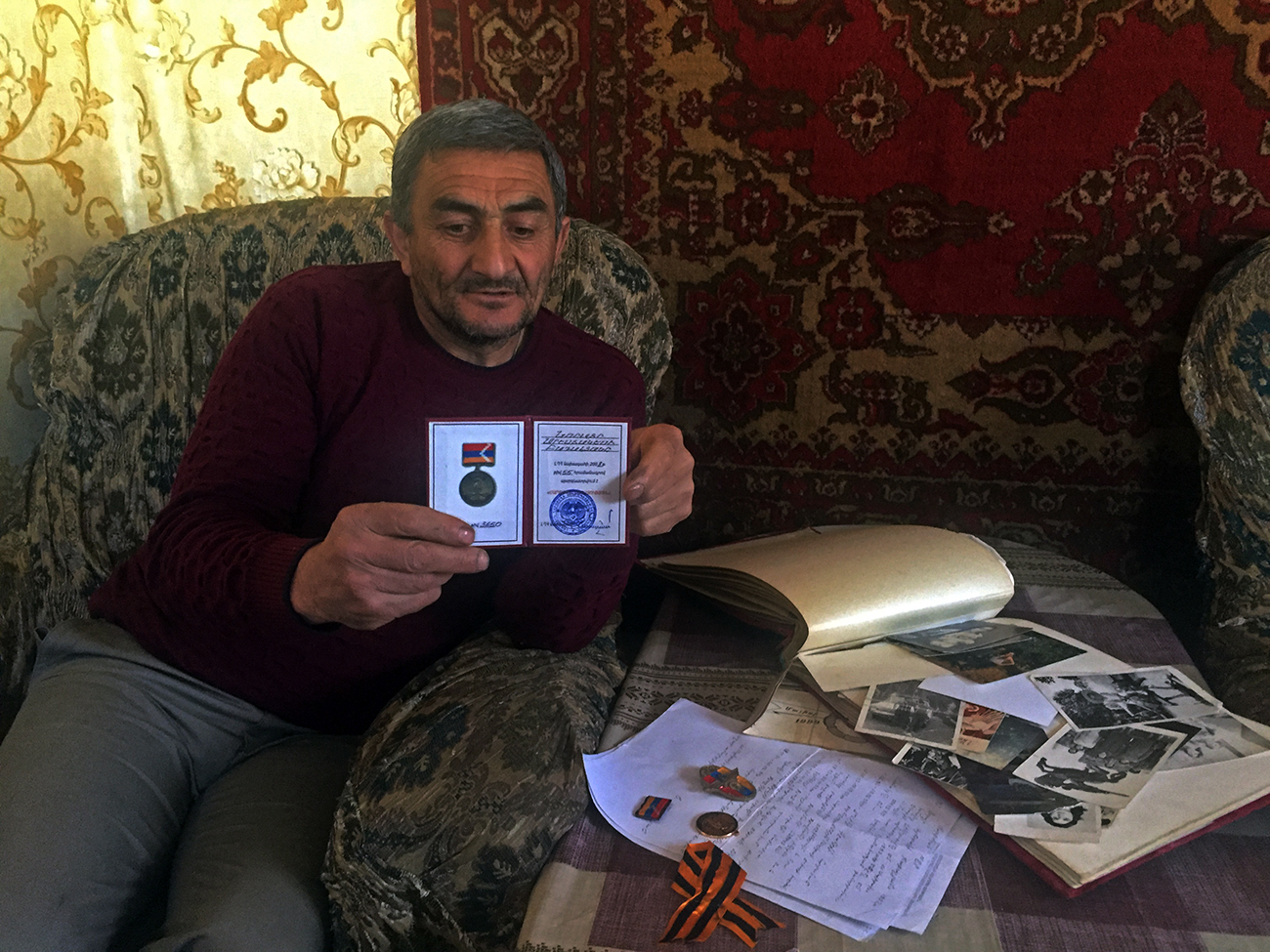
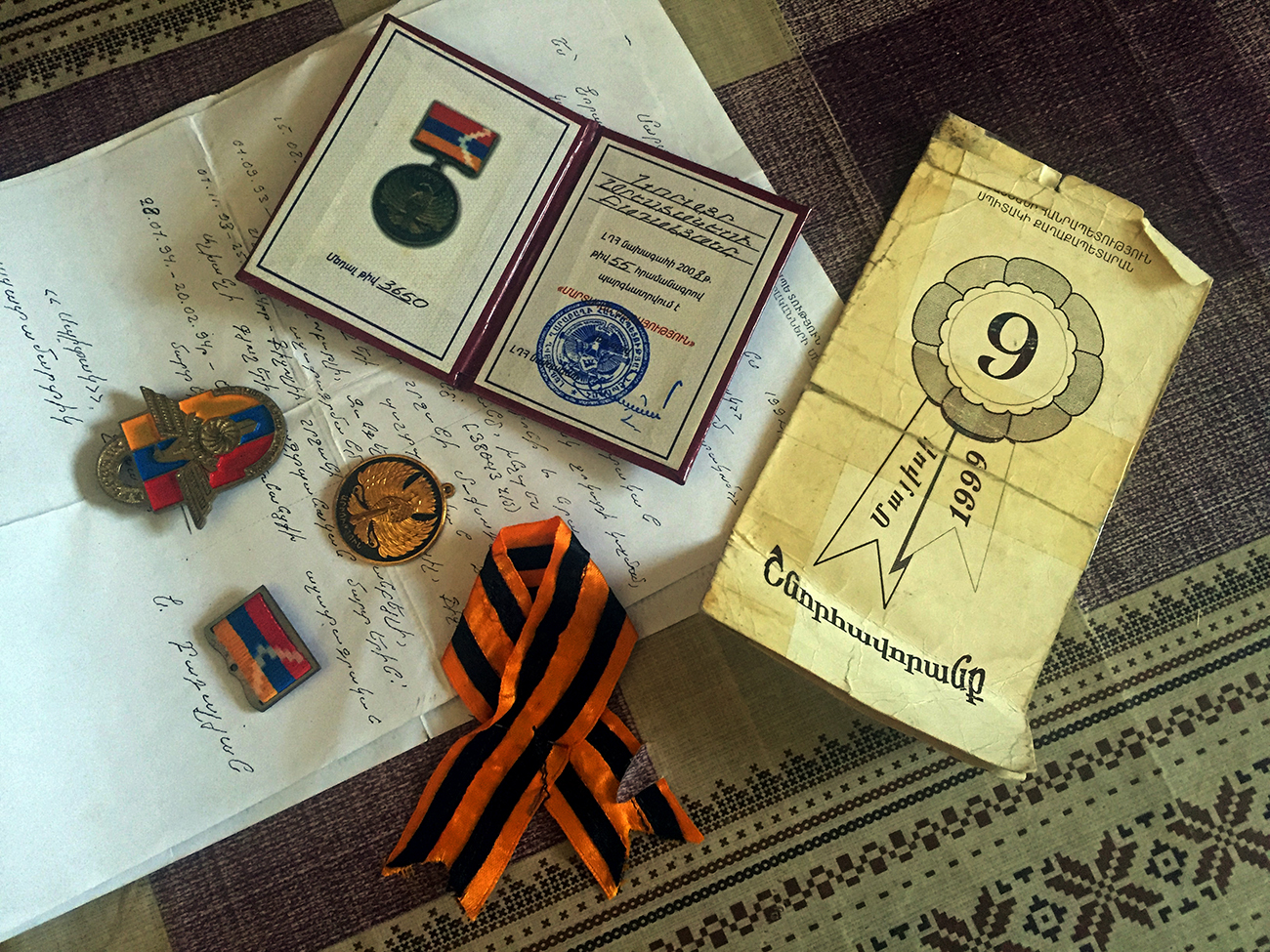
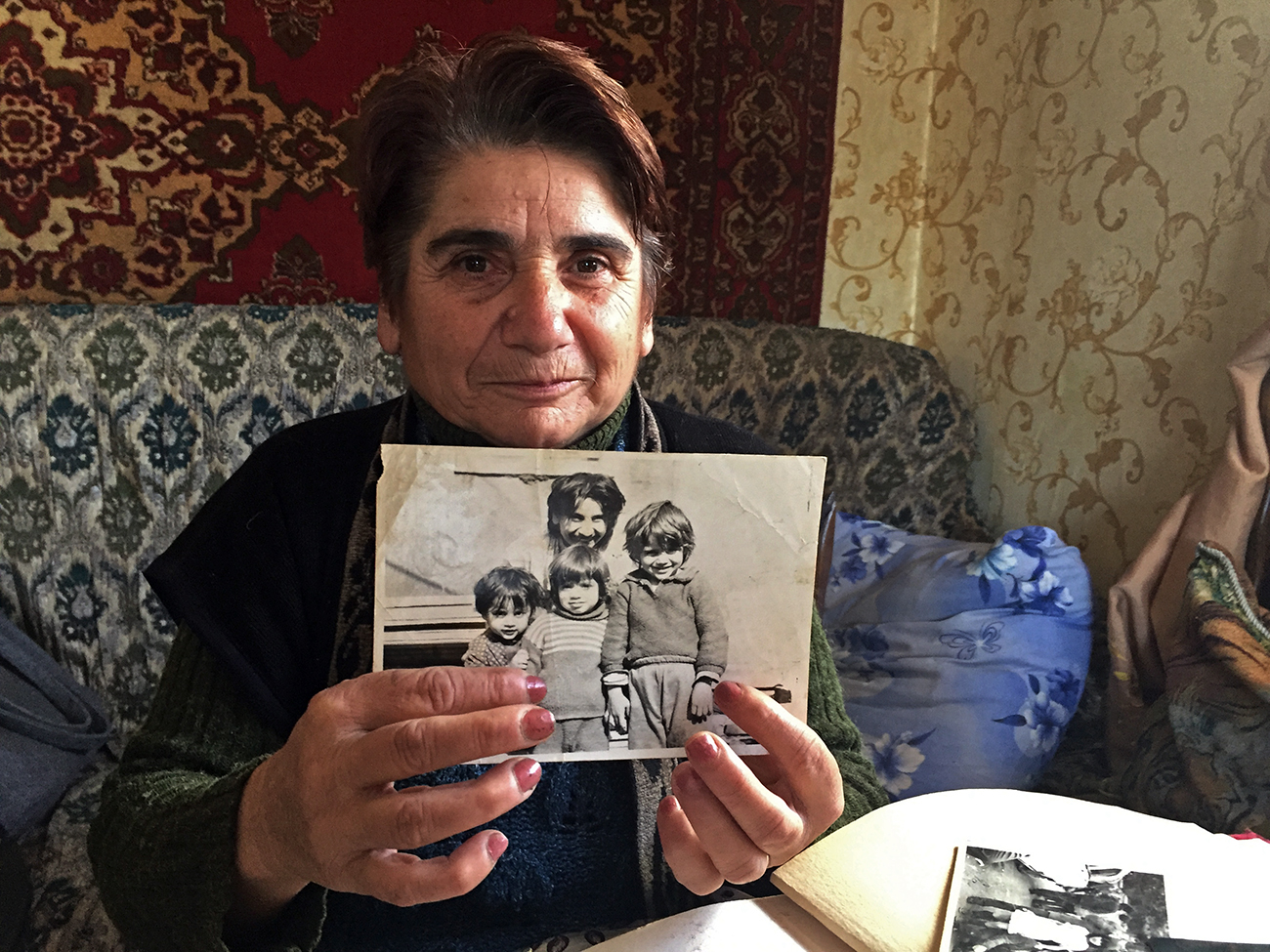
Zemfira and her family lived in Spitak at the time of the earthquake, in a flat on the third floor of a five-story building.
‘We had three children. That day, my eldest son, who was 9 years old, was at school. Our younger son slept in the cradle. And I, with my daughter Naira, went to the store to buy milk for the baby.’
‘We had left the entrance and didn’t have time to take a few steps as I felt that the earth was about to crumble out from under me. I turned around and saw that the building was gone.’
‘I didn’t understand what was happening. Our eldest son was in school, the youngest in the cradle. I rushed but didn’t know where to go. They said the school was no longer there, that it had been levelled, I went crazy, didn’t know which way to go, who to look for, how to help.’
‘My husband worked at the Spitak sugar factory. At the moment of the earthquake, he had stepped outside the factory and, ironically, survived, like me and our daughter.’
‘Hours passed and rescue operations began. My nine-month-old son Sako remained under a concrete panel for four hours. The panel fell on the cradle on an angle and hid the child, and Sako miraculously survived.’
‘When they lifted the concrete panel, he laid in the cradle and cried. A pebble scratched his forehead, and so he was safe and sound. I pressed him to my chest and cried, it was an inexplicable feeling, you can’t imagine what I experienced in those moments.’
‘After saving Sako, we went to the school, which was no longer there. I had a hope that my son Hovhannes was also alive. There was wreckage, ruins, dust all around — people were going crazy, everyone was looking for their relatives.’
‘Suddenly I saw my son’s legs sticking out from under the concrete, I recognised them. I pulled his legs, they remained in my hands. The concrete panel had fallen on him and that was it, his face was not visible. I screamed out, cried as they got him out. These are terrible experiences, I don’t even want to remember. If I hadn’t left the house with the girl, we wouldn’t have been saved either.’
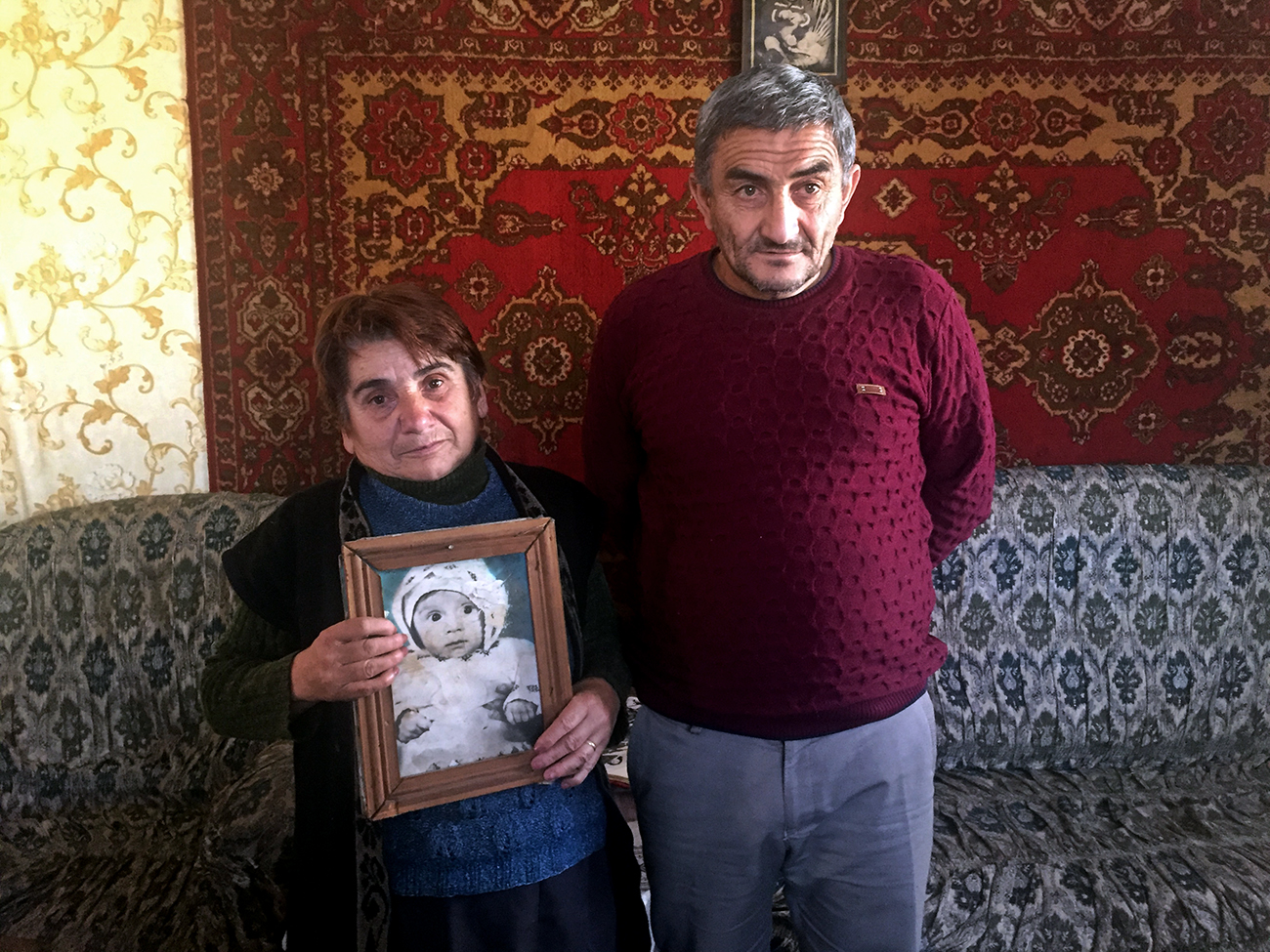
Rita Soghomonyan, 60, German Quarter
‘I was in the kitchen, I felt movement, but I didn’t understand what was going on, I just saw that everything was lost in the dust. I quickly entered the living room, two of my children were sitting on the sofa. I took them both in my arms and ran out into the yard and told them to go towards the garden.’
‘Then I returned to the house, my youngest son was sleeping in the bedroom, I wanted to go there but everything was swinging. I barely got to the bedroom, took the child, and went back to the street, everything was dizzy and swinging. In seconds I got out of the house — and it collapsed before my eyes.’
Earlier that year, Rita Soghomonyan’s family had moved to a new flat — before that they lived with her husband’s parents. ‘At the time, my husband lived in the flat we had received, he was making repairs there, and remained under the rubble and died.’
‘For two years I lived in my parents’ house in the village, then two years later, I was given this house of 42 square metres. My three children grew up here: Hovik, Alex, and Gayane. This is where I spent my best years. My grandchildren are also growing up here.’
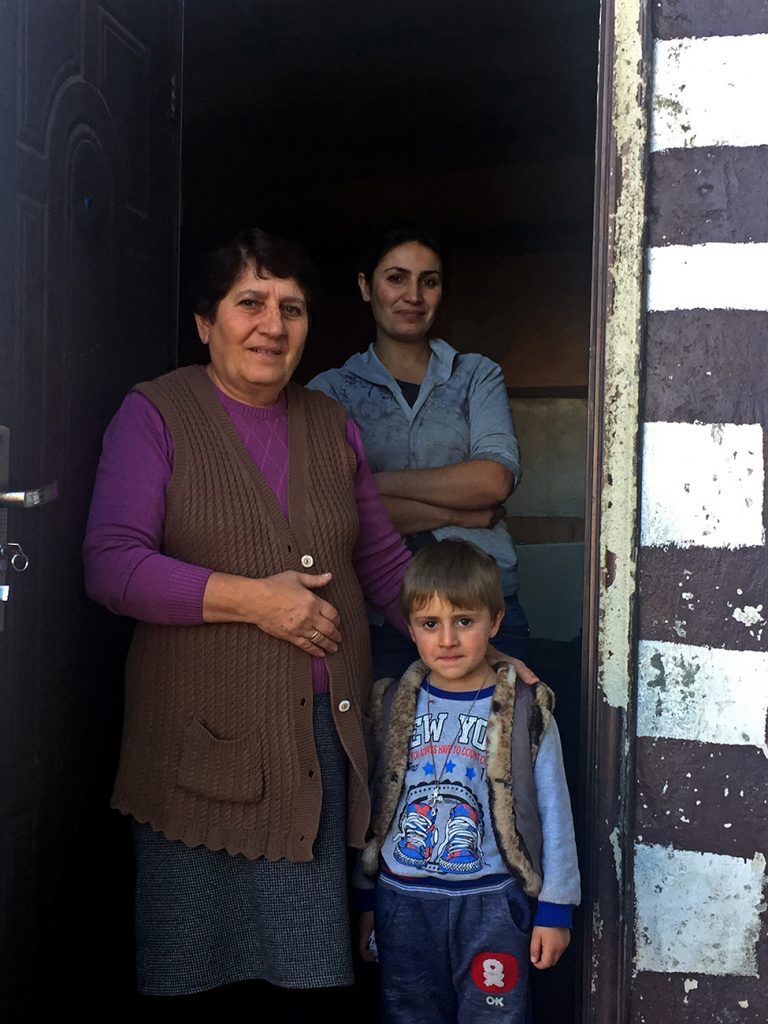
‘We live like hermits, there is nothing here — only residents and these houses. The residents have already adapted, there is no other way out. Over these thirty years, we repaired [the house] several times, you can see how many times we did it from the wallpaper, but the wood has rotted. The Germans built these houses for five years, not for a lifetime.’
‘In 2011, we were provided with a two-room flat, my eldest son and his family moved there, and they all lived there together. Each of my sons has two sons. My sons grew up in these houses; why do my grandchildren have to pay for an earthquake that happened 30 years ago? My daughter got married and moved to Yerevan.’
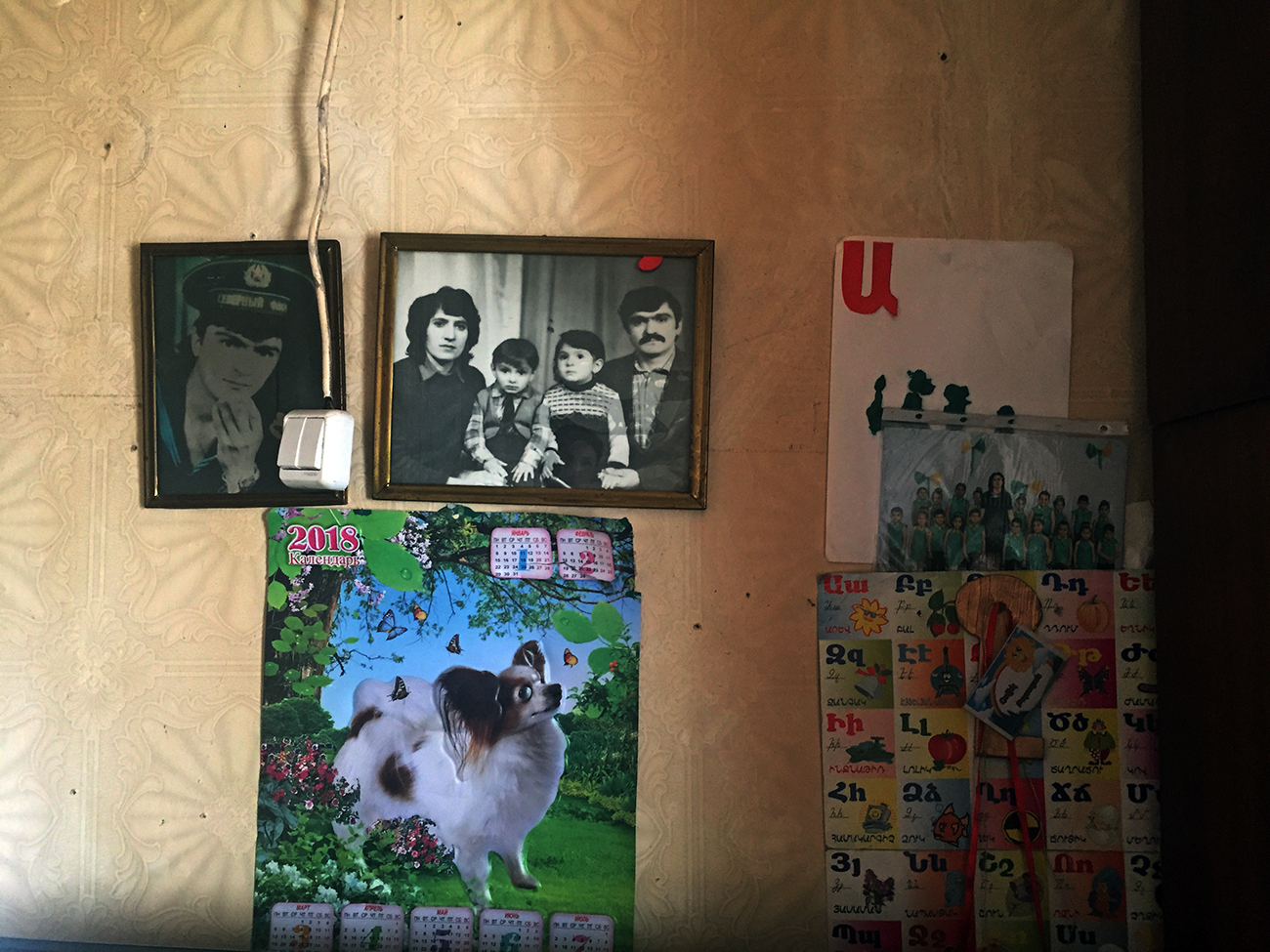
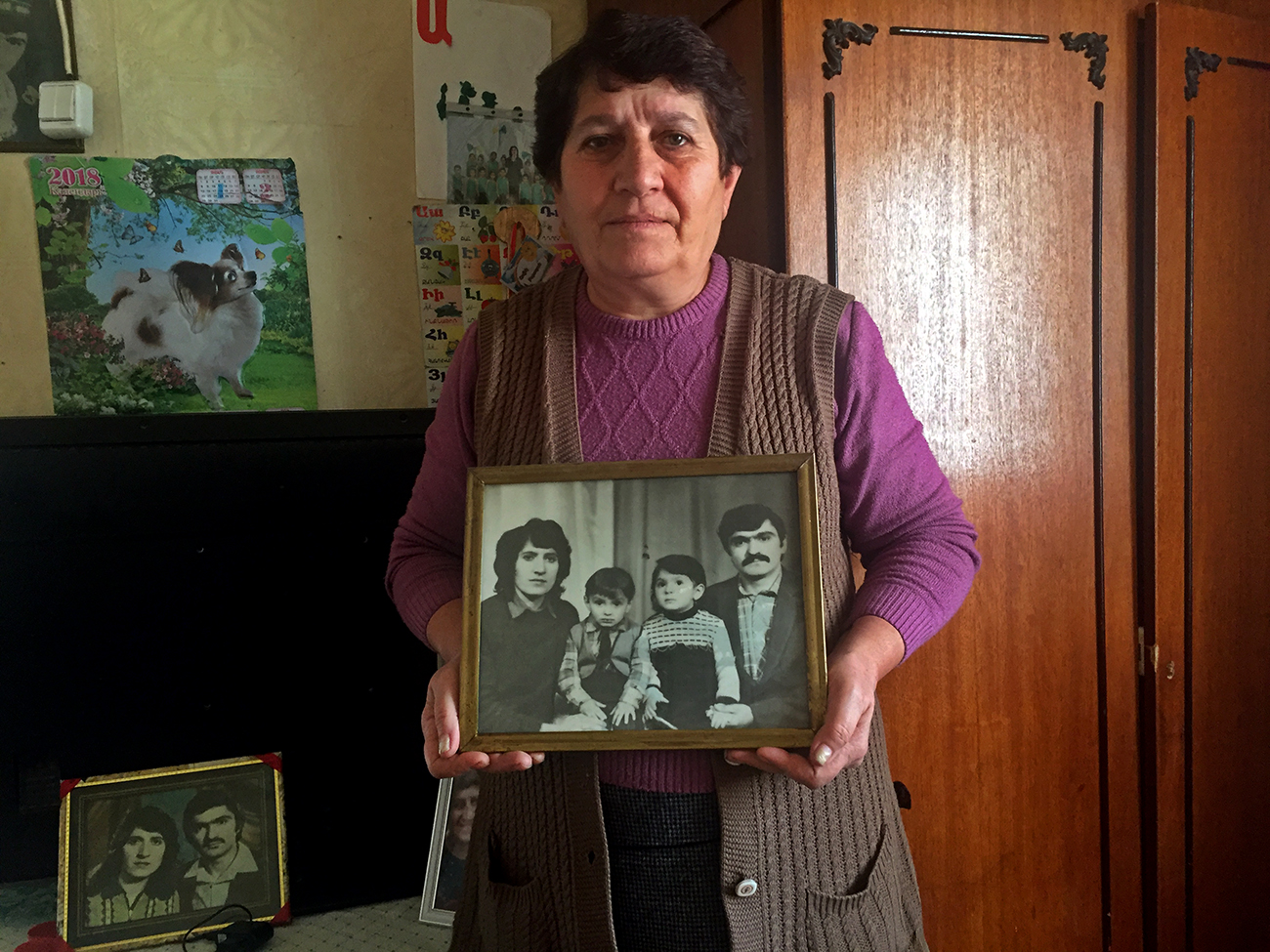
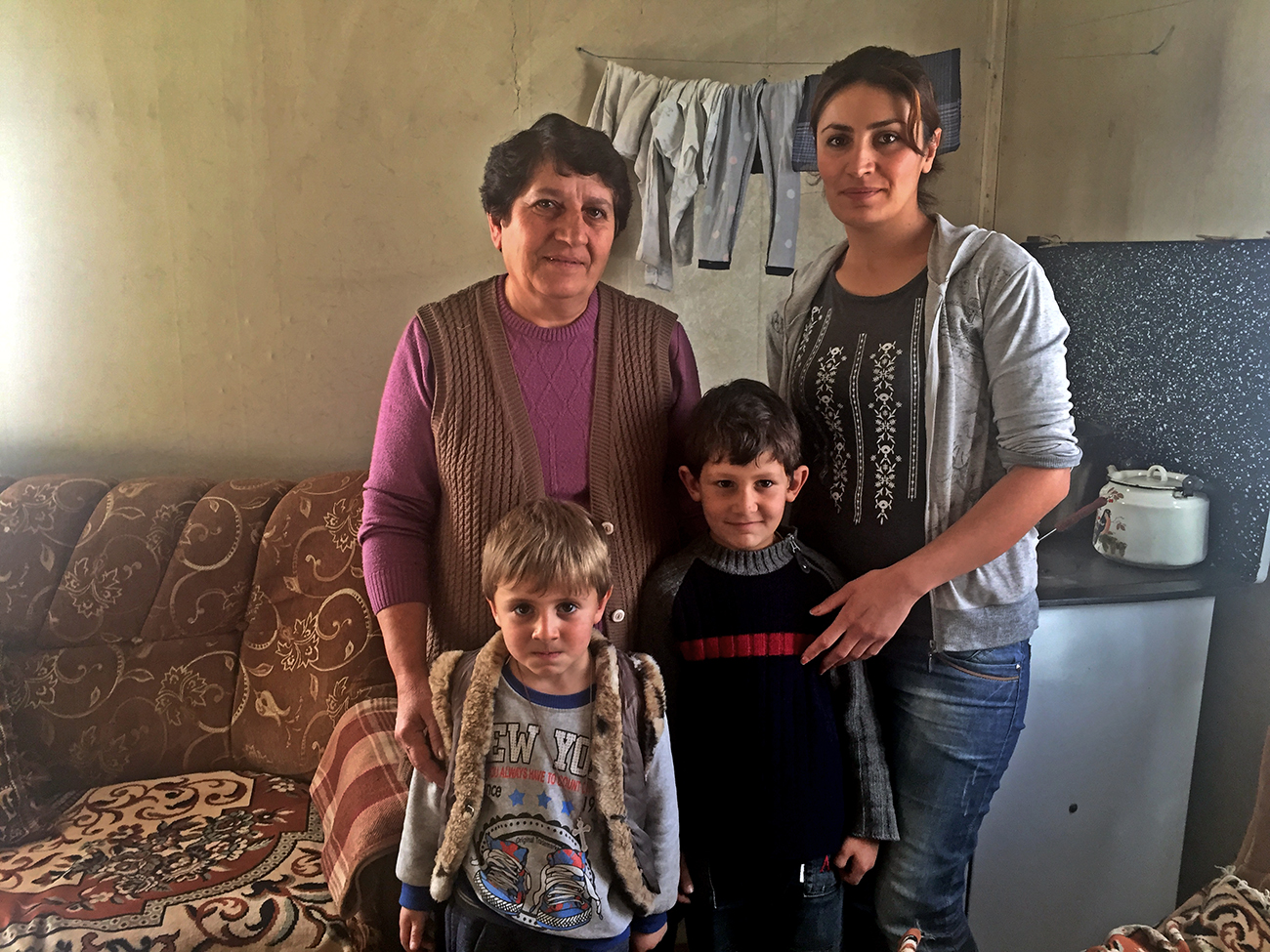
‘I never worked, there was no one to look after the children but me. I handled raising them without a man, I received a pension, an allowance, humanitarian aid.’
‘This quarter is built near the ravine. In winter it’s very cold here, the wind breaks the roofs of houses. So many nights I slept embracing the children with a tremor in my heart. When it gets dark we don’t leave, we are cut off from the city, it’s very dangerous [here].’
‘My son goes away to earn money, and we live this way. If we’re not able to handle it, we borrow things in stores and then pay them back later. In winter, the house is very cold. We consume about five cubic meters of wood, which costs about ֏100,000 ($200). I had no idea we would survive the earthquake, that life would continue, but we did.’
‘It’s damp in the house, it’s wet under the windows, the bed is almost soaked in winter, it’s colder [to live in the damp], imagine how much one needs to heat [the house] to make it warm so that the mouldy walls can be dried out, it’s just impossible.’
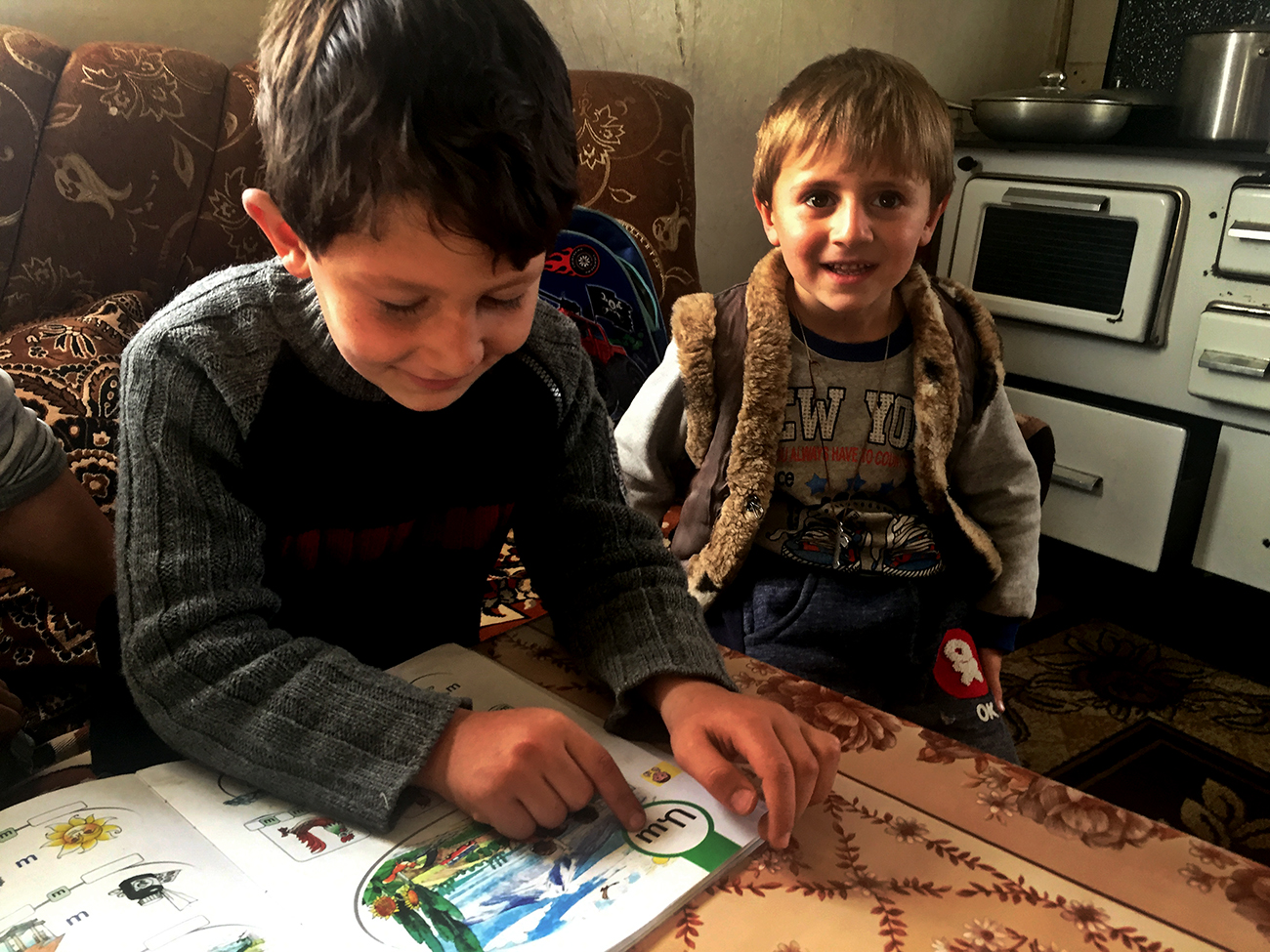
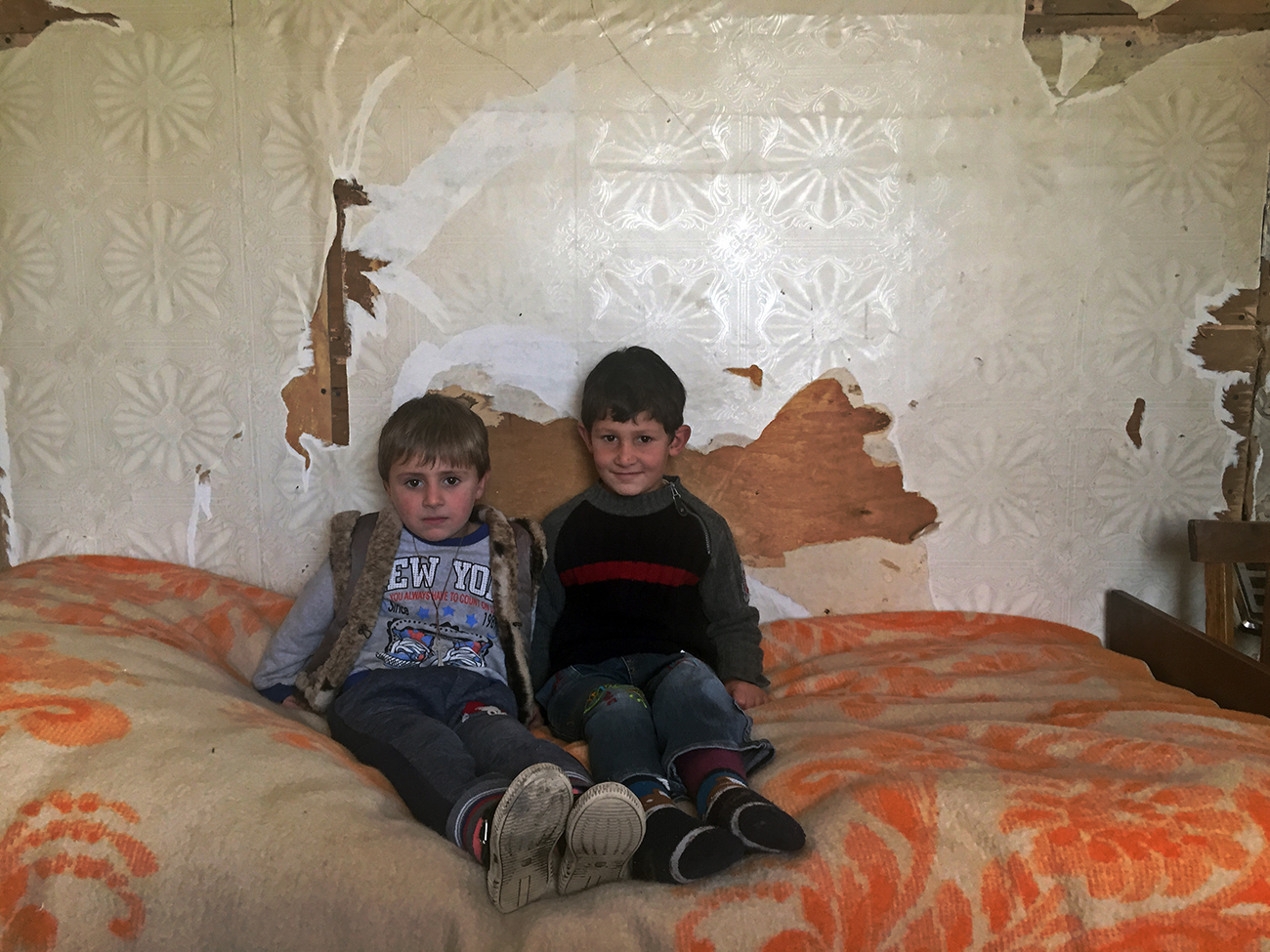
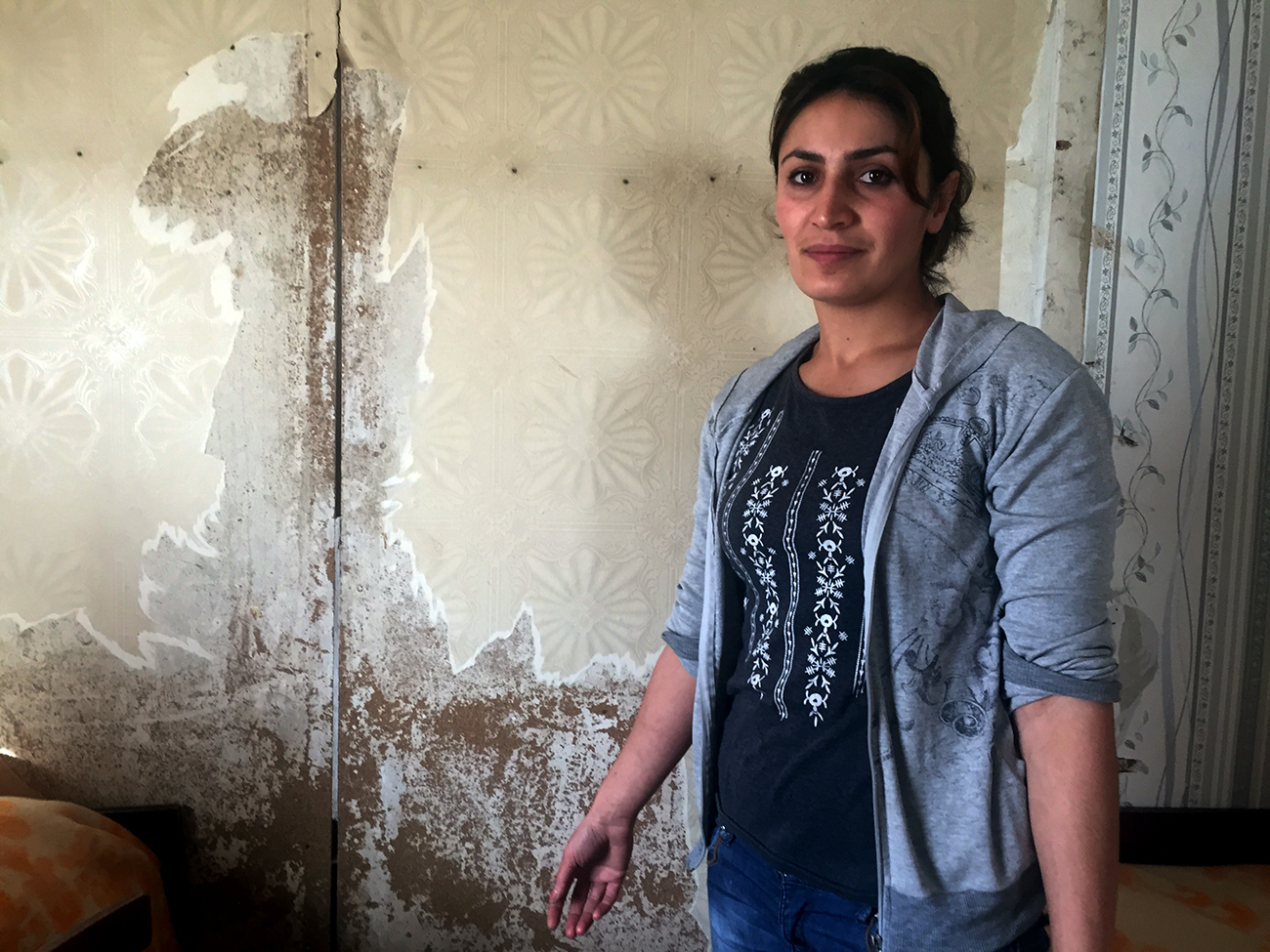
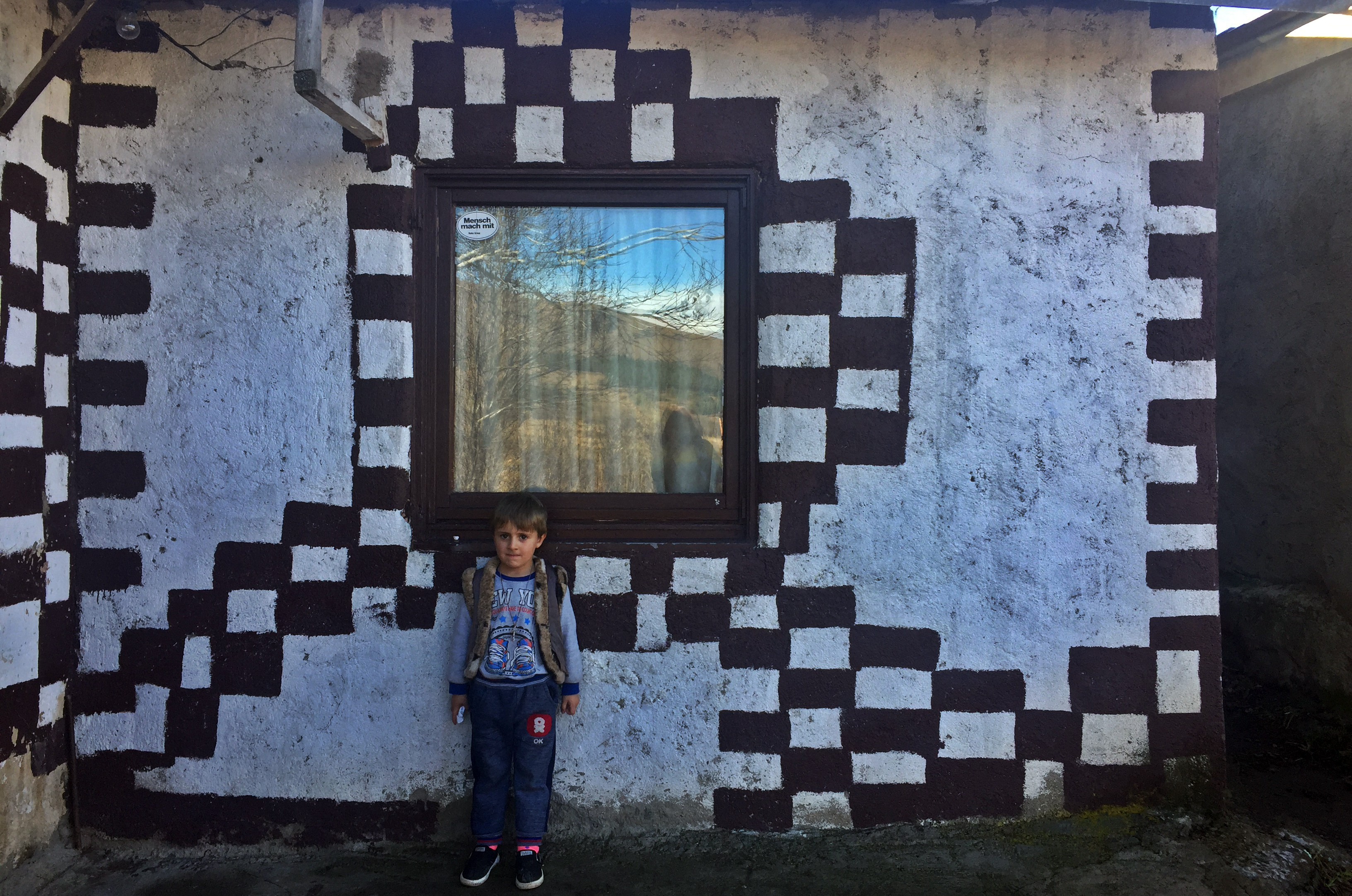
Armen Minasyan, 39, Italian Quarter
‘We are the generation that remembers little about that time. I was nine years old, my wife was three. I remember everything was destroyed, we lost our loved ones.’
‘After that, we started living in this house. We grew up in this house, now our children are growing up here. They provided us with housing in the Italian quarter 14 years ago, before that we lived in another house.’
‘At first glance, it seems like everything is good, beautiful, but in reality, this house is a hive of diseases. I have three children, and they all periodically suffer from pneumonia. All the members of our family have a backache — this is due to the humidity.’
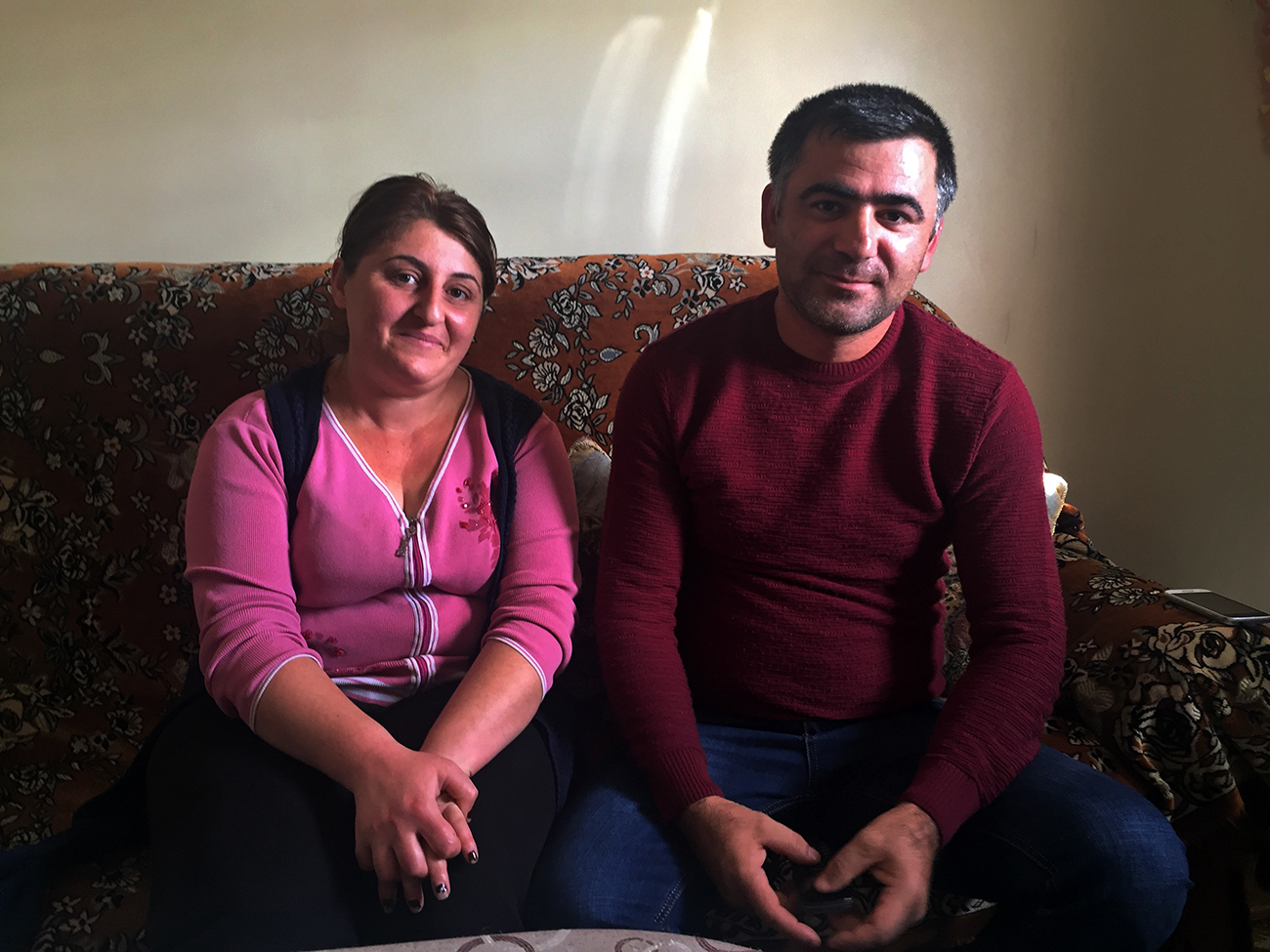
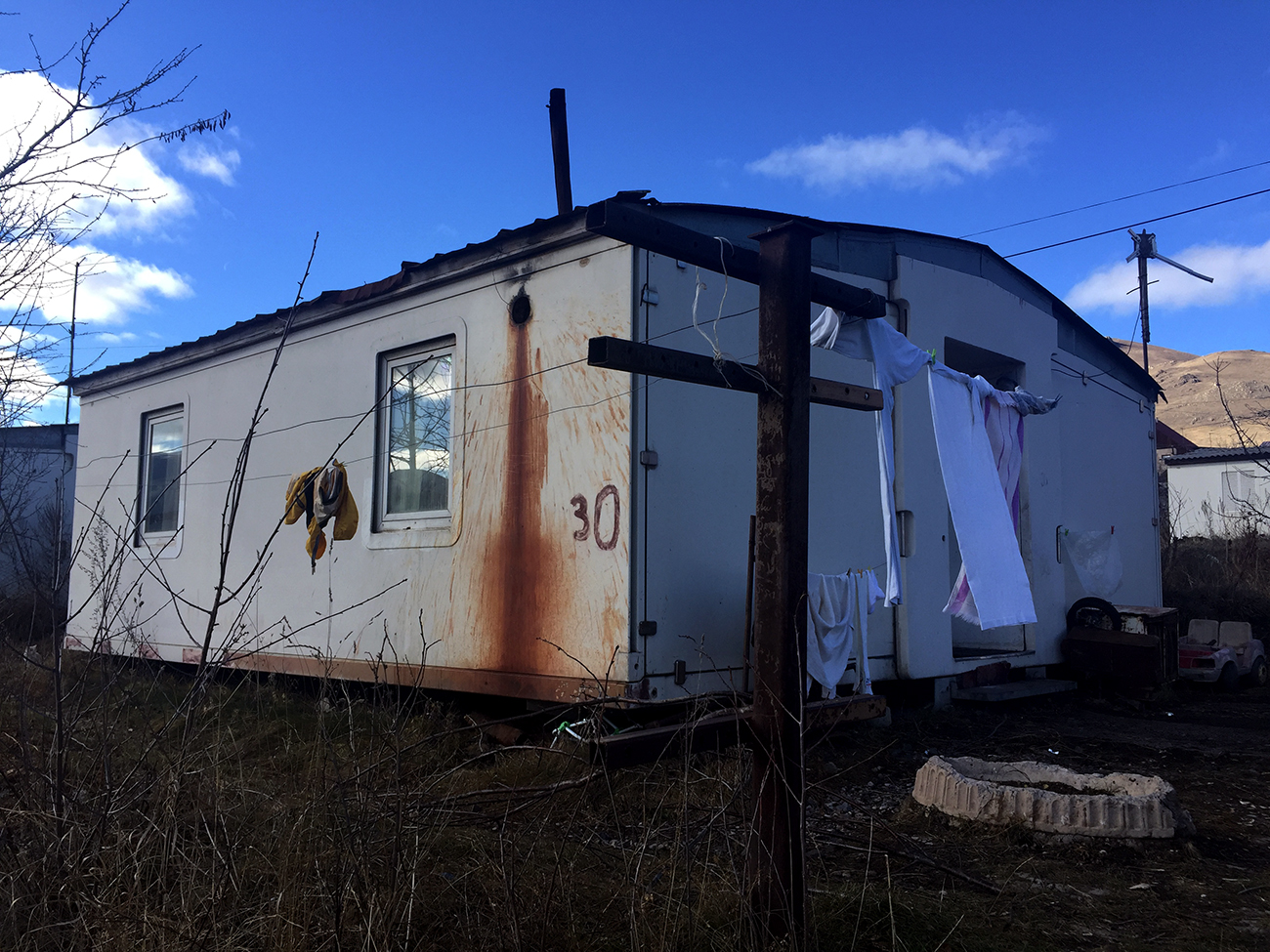
‘It’s a crime to have to live here for a long time because the humidity in the house is so high. The walls are hermetically sealed, stopping the air from coming through, water flows directly through the walls. If [the house] was made of wood, it would be ok if it would rot, but we might have air inside. But here, everything is built of plastic and assembled with rubber.’
‘The walls are very thin, we heat [the house] with wood, for the whole winter we buy nine cubic meters of wood. In this quarter, almost all the residents have problems with the lungs. These houses are like aquariums, you breathe in moist air all the time […] the body contracts viruses quickly.’
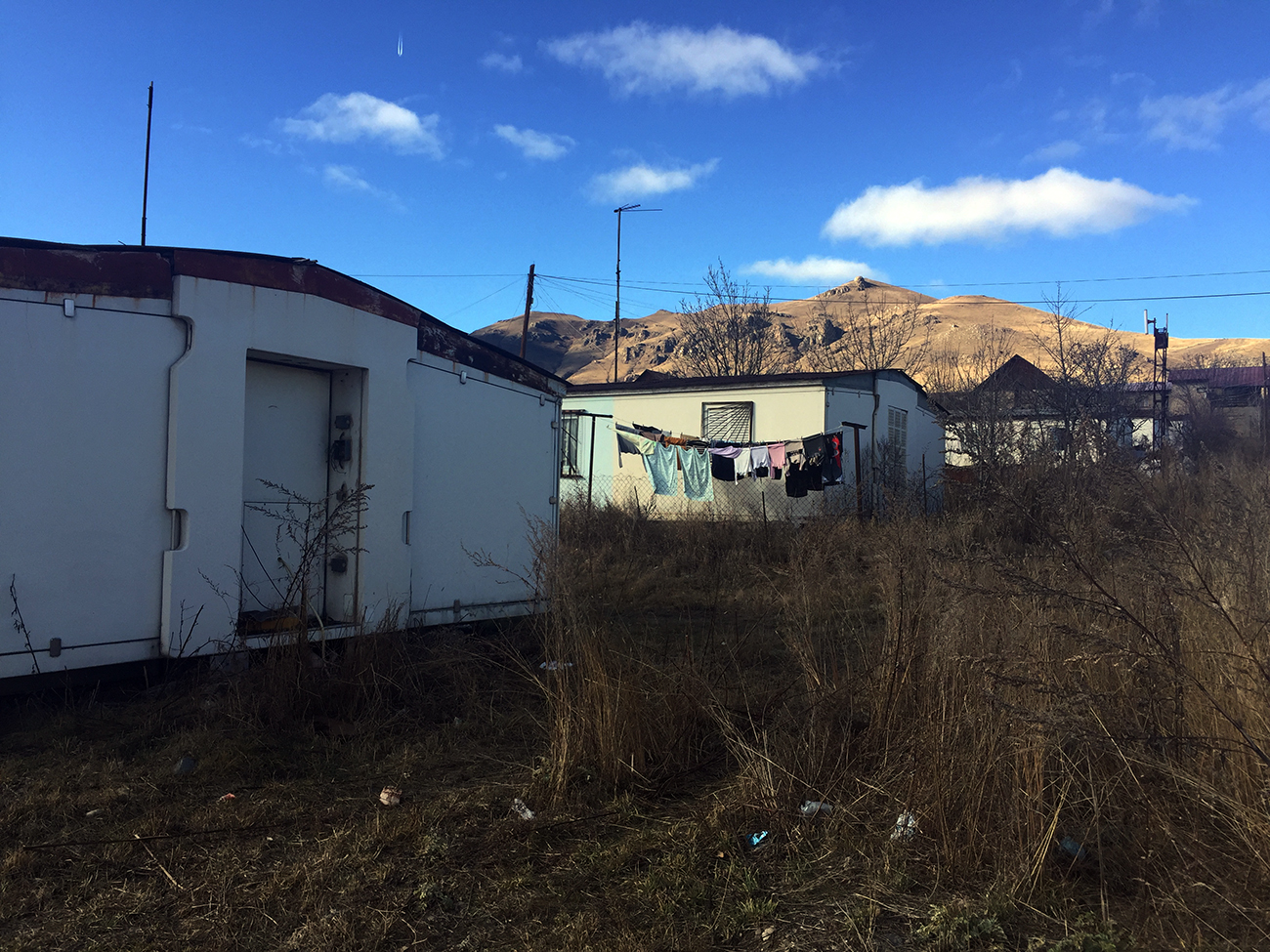
‘We want to buy a house, we’re not holding out hope for the state. But I can’t get a mortgage. I have been leaving [the country] to earn money for 15 years. The bank requires a certificate of employment with the average salary indicated, how can I provide this? And the money I earned is barely enough for food, I can’t save for a house.’
‘I spend six to seven months a year in Adler [near Sochi, Russia], where I work in construction. I’ve been back for 15 days. I don’t take my family with me, I spend a lot, but I don’t earn so much. Here, almost all men leave [the country] to earn money, because there is no work for men [here]. If there was a job with a salary of ֏150,000 ($300) [in Spitak] I would not go.’
‘I’ve been leaving [the country] for 15 years, [facing] various difficulties, dangers. [When] I come, the children don’t recognise me, I don’t see them growing up. You have no idea, I spend hours with the children to understand their character, their interests. I haven’t been at home for such a long time that I do not completely know my children.’
‘In Spitak, you can buy a two-storey five-room house of your own for $13,000. It seems to be a good price, but this is also unbearable for us. Houses are inexpensive, there is simply no money…’
